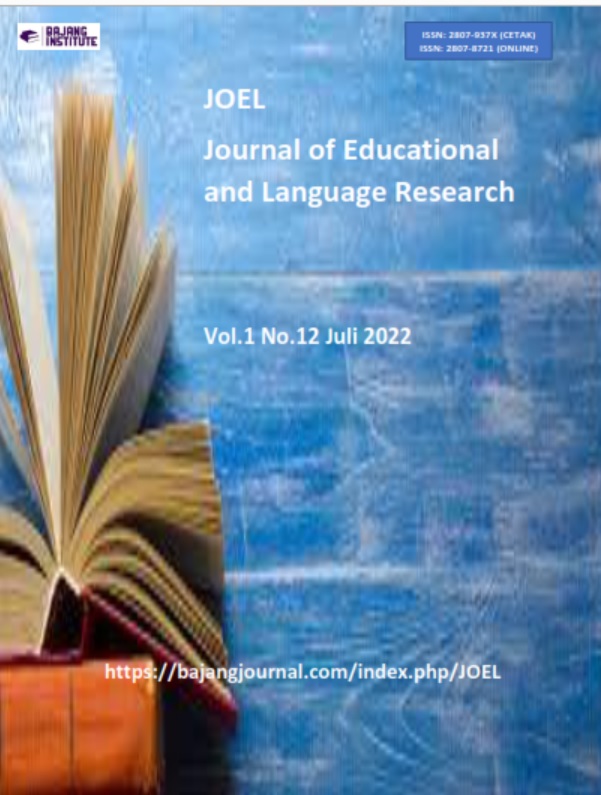ANALISIS KESULITAN PENGGUNAAN MICROSOFT TEAMS PADA PEMBELAJARAN MATEMATIKA DIMASA PANDEMI COVID-19
DOI:
https://doi.org/10.53625/joel.v1i12.3003Keywords:
Student Learning Difficulties; Microsoft Teams; Covid-19 PandemicAbstract
The world is currently faced with a covid-19 pandemic that forces people to move at home, including the world of education that carries out teaching and learning activities from home using online learning. This research aims to find out the causes and ways to overcome the learning difficulties of students of class X MIPA 4 Sma Negeri 1 Kota Sorong on math learning using microsoft teams during the covid-19 pandemic. This type of research is quantitative descriptive combined with qualitative approaches. The subjects of this study were students of class X MIPA 4 Sma Negeri 1 Kota Sorong school year 2020/2021 which amounted to 26 students and 1 math teacher. The object in this study is the cause of students' learning difficulties using microsoft teams on math learning provided by teachers. Data collection techniques are observation, questionnaire, interview and documentation. The data analysis techniques in this study are qualitative and quantitative. The results showed that students experienced several causes of learning difficulties that were divided into 4 (four) indicators, students' inability to learn online, interaction in the learning process, assignments and teaching materials and technical constraints on online learning using microsoft teams.
References
] O. I. Handarini and S. S. Wulandari, “Pembelajaran Daring Sebagai Upaya Study From Home (SFH).,” J. Pendidik. Adm. Perkantoran, vol. 8, no. 3, pp. 465–503, 2020, [Online]. Available: file:///C:/Users/win10/Downloads/8503-Article Text-27609-1-10-20200629 (1).pdf
Y. A. Mu’ti, “Efektivitas pembelajaran online dengan Microsoft Teams pada pelajaran Matematika Materi Program Linear,” Edukasia J. Pendidik. dan Pembelajaran, vol. 1, no. 2, pp. 347–358, 2020.
M. Warshawsky and F. W. Paul, “the Independent Variable!,” Simulation, vol. 16, no. 1, pp. 45–46, 1971, doi: 10.1177/003754977101600108.
Sugiyono, “Metode Penelitian Kuantitatif, Kualitatif dan R&D”, (Bandung: Alfabeta, 2019), hlm. 17.
H. Nabila and D. Sulistiyaningsih, “Analisis Kesulitan Belajar Matematika dalam Pembelajaran Daring Berbantuan Microsoft Teams Kelas XI SMA NEGERI 9 Semarang,” Edusainstech, Pros. Semin. FMIPA UNIKUS 2020, pp. 62–71, 2020.
D. Budiastuti and A. Bandur, Validitas dan Reabilitas Penelitian. 2018. [Online]. Available: www.mitrawacanamedia.com
M. Erfan, M. A. Maulyda, V. R. Hidayati, F. P. Astria, and T. Ratu, “Tes Klasik Dan Model Rasch,” Indones. J. Educ. Res. Rev., vol. 3, no. 1, pp. 11–19, 2020.
I. Imron, “Analisa Pengaruh Kualitas Produk Terhadap Kepuasan Konsumen Menggunakan Metode Kuantitatif Pada CV. Meubele Berkah Tangerang,” Indones. J. Softw. Eng., vol. 5, no. 1, pp. 19–28, 2019, doi: 10.31294/ijse.v5i1.5861.
Cholid Narbuko dan Abu Achm











